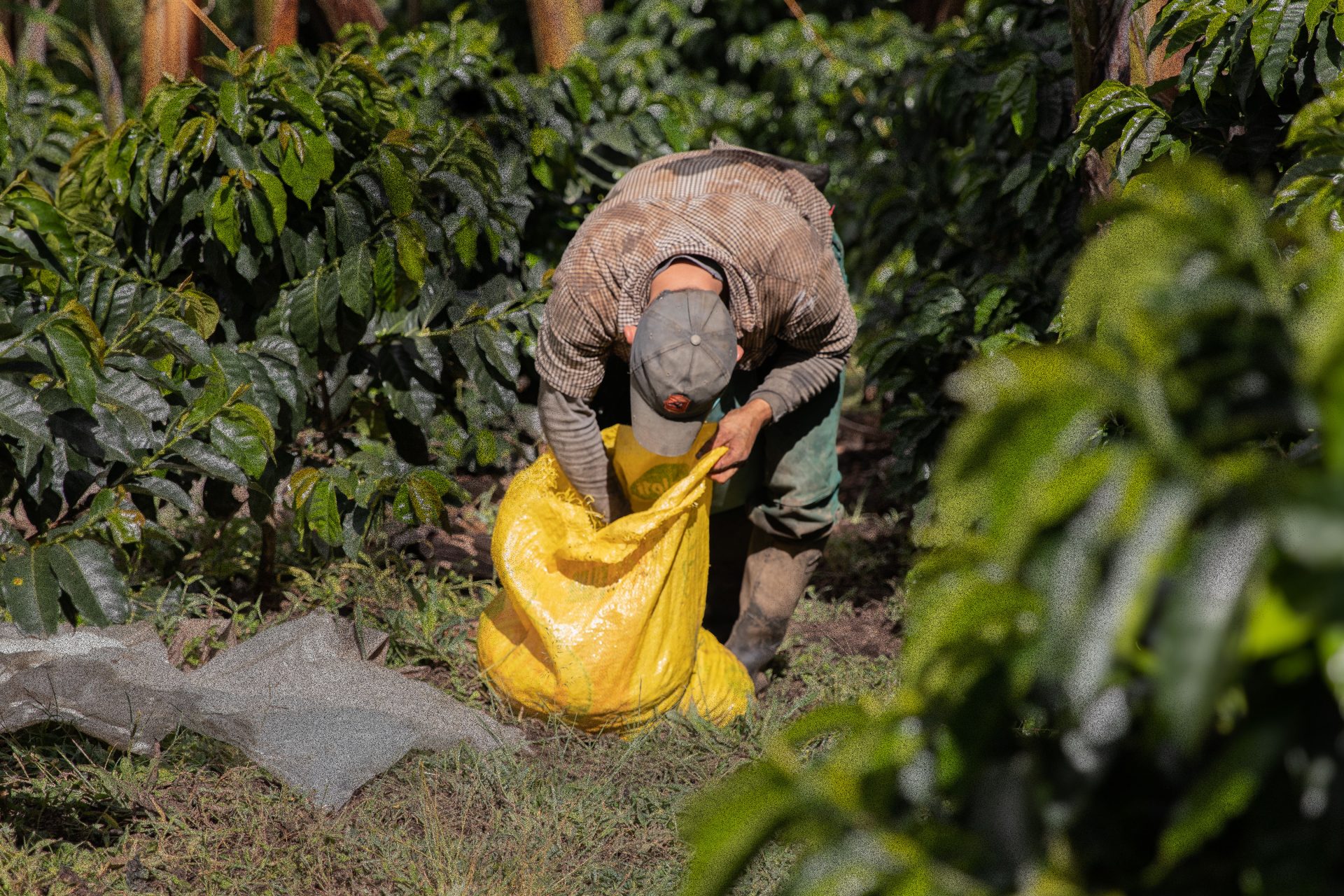July 27 was a historic day for coffee producers in Colombia, as the domestic reference price for parchment coffee reached an all-time high of 1,905,000 COP per carga. Just 2 years ago, in mid-2019, when we purchased our first cargas of coffee from the Giraldo family, producers were celebrating the domestic reference price reaching levels above 800,000 COP. This was after the 2018 crisis, when the price fell to 653,000 COP in September, way below the costs of production. At that point, the sum (1,560,000 COP per carga) we offered to pay seemed surreal to the farmers. Why did the situation change so radically?
High USD-COP exchange rate
On July 27, the USD-COP exchange rate reached the highest level in 15 months, closing at 3,932 COP. This was due to a combination of factors, including the economic situation in the US, the influences of the pandemic and the internal instabilities of the current political system in Colombia. None of this is directly related to coffee, so why does it matter for the coffee market?
The international coffee price is provided in USD at the New York Stock Exchange. As we explained last month, Colombia’s National Coffee Federation calculates the domestic reference price for coffee, that is, how much coffee farmers are paid for the product, based on that international price. This means: the USD-COP exchange rate has a direct influence on the domestic reference price for coffee in Colombia.
Weather conditions
In March 2020, following the uproar caused by the pandemic, the USD-COP exchange rate had reached 4,120 COP, even higher than now. However, the domestic reference price for coffee at that point hit 1,145,000 COP – which was considered high at the time, but doesn’t compare to the current level. Why is that?
Coffee is a trade commodity, thus there are plenty of factors that can influence its price. Buyers and sellers are constantly analysing these factors, but basically they can be simply summarized as supply and demand. When there’s more supply than demand, prices go down, when there’s more demand than supply, prices go up. While buyers and sellers are constantly trying to forecast future trends and how these might affect supply and demand, this doesn’t necessarily reflect the present situation.
The month of July is usually the coldest month in the southern hemisphere, and this year it was particularly cold in the southern and southeastern regions of Brazil, with frost affecting some of the largest producing areas of Arabica beans in the country. Brazil is the largest coffee producer on our planet, and its production accounts for between 25 and 30% of the global supply. That’s why the expectation of a smaller crop in Brazil, following plummeting temperatures harming the plants, provokes a global reaction: as buyers forecast a shortage in supply next year, we see a higher demand for coffee right now to fill the stocks right in time, which in turn causes prices to rise.
What awaits us in the future when it comes to harvests?
The situation in which coffee-farming regions of the world are right now may not remain a single-time event. Due to climate change, extreme weathers like drought, heat, heavy rains and cold will spell more and more trouble to humans in the upcoming years. As of today, it may feel like climate change is a faraway threat, but augmenting coffee prices need to be seen as a harbinger for the hard times to come.
Already, changes in weather are bringing about new, risk-oriented marketing strategies: due to recent market fluctuations and a dreary outlook for the future, systematic research into more weather-resistant coffee plants is already under way. Maybe, it’s time to think about what it would mean to us to drink genetically altered coffee in the future.
What awaits us in the future regarding our economy?
Recently, an article about the advantage of large-scale companies over small ones left us stunned. As the global coffee price has seen a steep rise in the last weeks, big companies have yet sensed the opportunity to turn to their customers, promising their prices will for the moment stay stable, no matter what.
While some smaller coffee producers have just recently published press releases in which they announced that they will have to raise their prices on the basis of current events, the giants are obviously determined in asserting themselves, leaving smaller businesses looking bad. Maybe you’re asking yourself why larger companies once more got an advantage over non-giant traders. Here are some of the main reasons: since large businesses are
1. able to source their coffee beans from a variety of farmers (due to their corporate power and their budget),
2. are able to store them respectively, and
3. got standard higher prices to which their customers are used,
they’re constantly building a protective shield around them, while all the other companies are down the hierarchy. More than ever, it’s up to the customers to choose which businesses to support in order to keep them alive. Once again, and given the current situation, we’d like to thank you for your loving support and your determination to do good!

